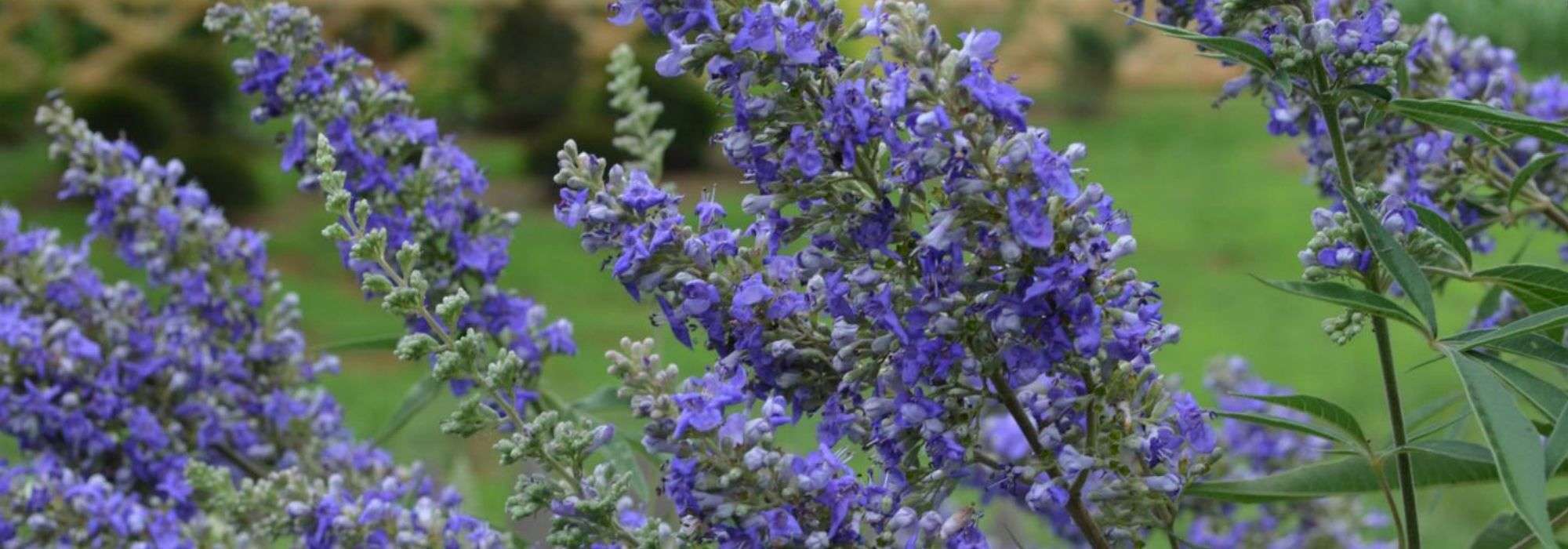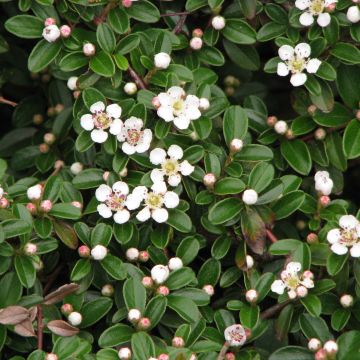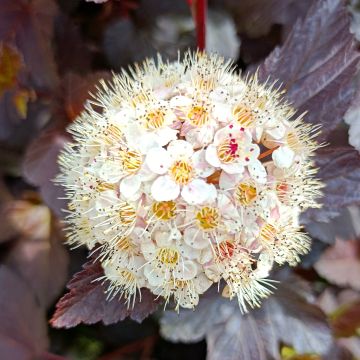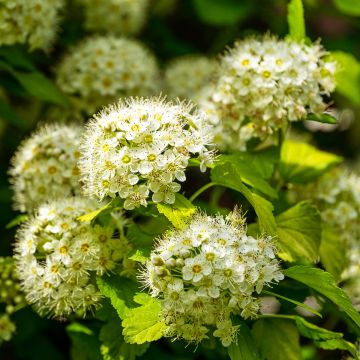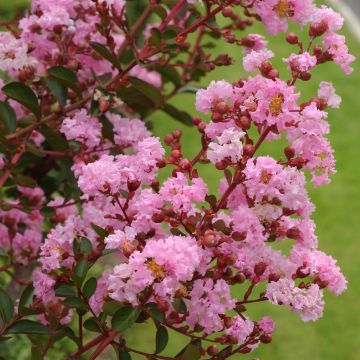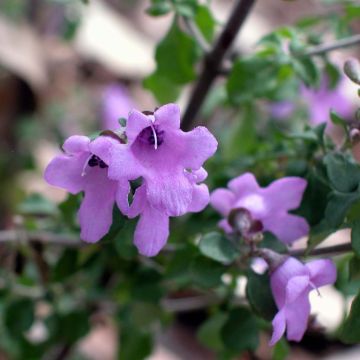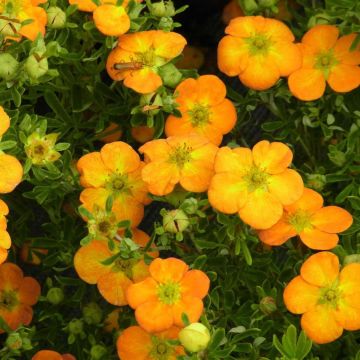

Vitex agnus-castus Chicagoland Blues - Chaste Tree


Vitex agnus-castus Chicagoland Blues - Chaste Tree
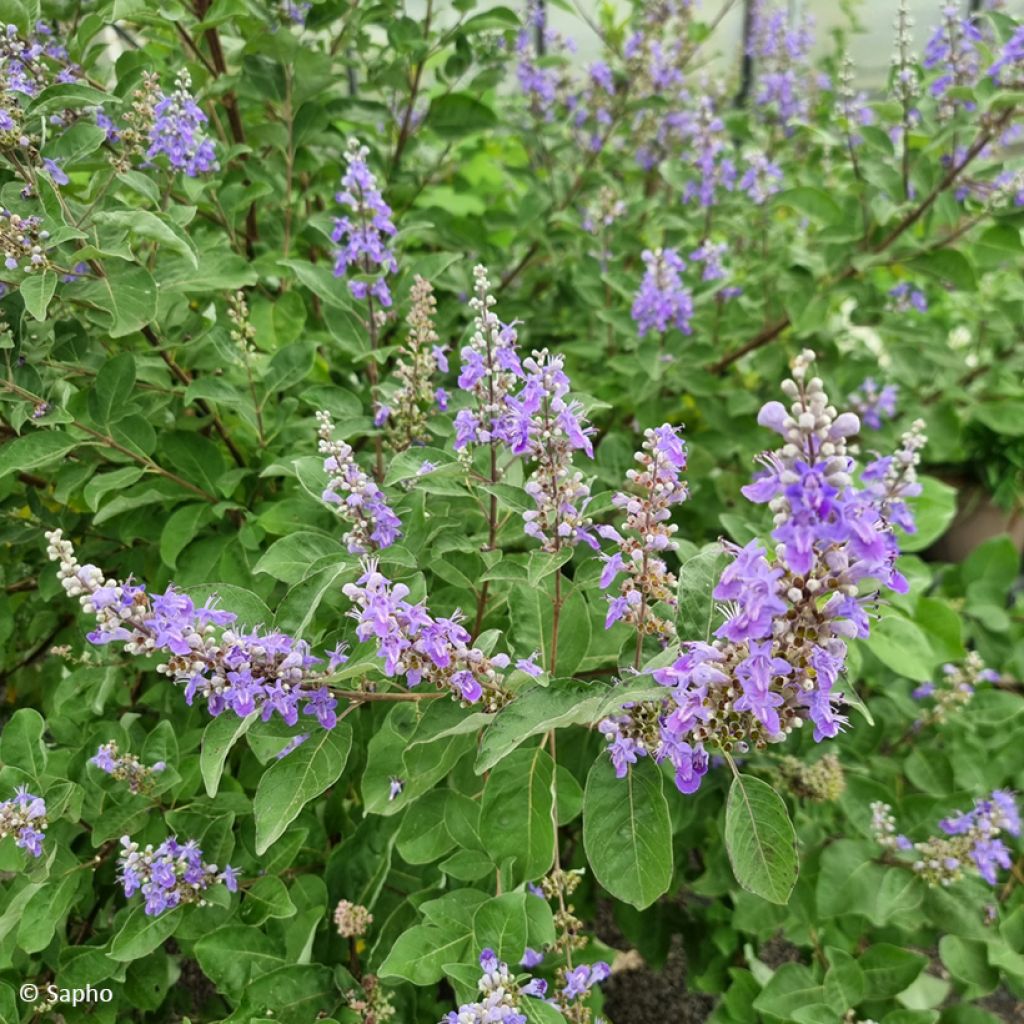

Vitex agnus-castus Chicagoland Blues - Chaste Tree


Vitex agnus-castus Chicagoland Blues - Chaste Tree
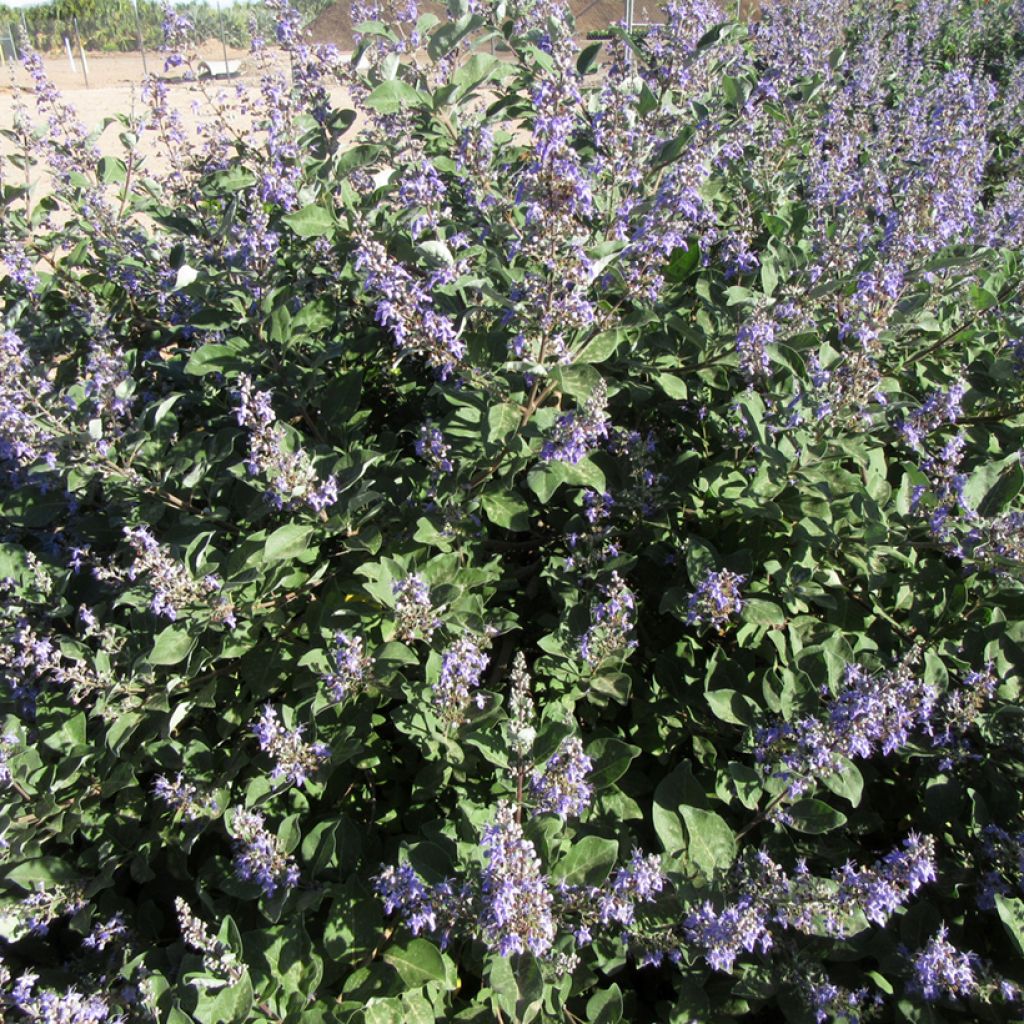

Vitex agnus-castus Chicagoland Blues - Chaste Tree
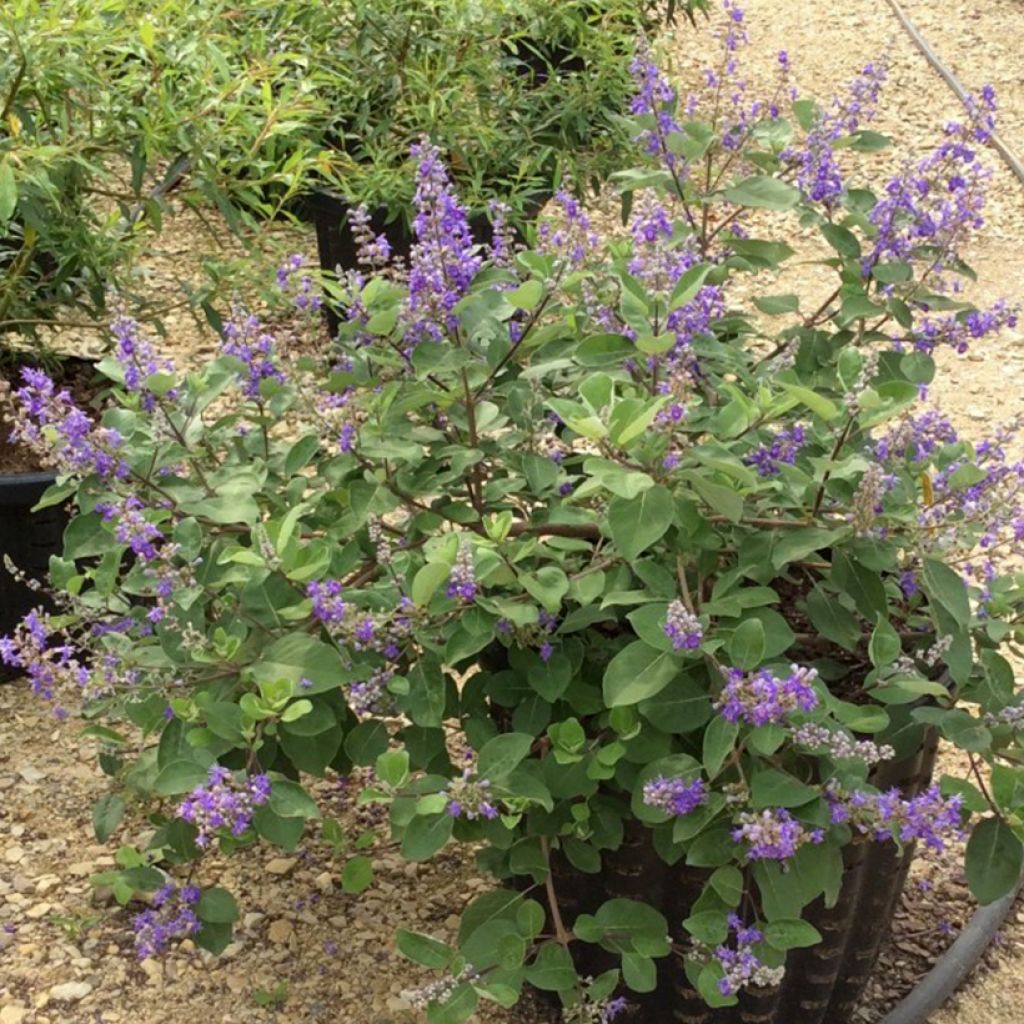

Vitex agnus-castus Chicagoland Blues - Chaste Tree
Vitex agnus-castus Chicagoland Blues - Chaste Tree
Vitex agnus-castus Chicagoland Blues (Daniel Searle)
Chaste Tree, Monk's Pepper, Chasteberry, Chaste Lamb
Order received on 22/08/2023 Young plant well packaged and shows no damage. Plant's progress to be monitored...
A.B., 22/08/2023
Special offer!
Receive a €20 voucher for any order over €90 (excluding delivery costs, credit notes, and plastic-free options)!
1- Add your favorite plants to your cart.
2- Once you have reached €90, confirm your order (you can even choose the delivery date!).
3- As soon as your order is shipped, you will receive an email containing your voucher code, valid for 3 months (90 days).
Your voucher is unique and can only be used once, for any order with a minimum value of €20, excluding delivery costs.
Can be combined with other current offers, non-divisible and non-refundable.
Home or relay delivery (depending on size and destination)
Schedule delivery date,
and select date in basket
This plant carries a 24 months recovery warranty
More information
We guarantee the quality of our plants for a full growing cycle, and will replace at our expense any plant that fails to recover under normal climatic and planting conditions.
Would this plant suit my garden?
Set up your Plantfit profile →
Description
Vitex agnus-castus 'Chicagoland Blues' is a variety of hybrid Chaste Tree that is appealing for its modest growth and well suited for small gardens. This broad and bushy shrub has many other advantages: generous summer flowering with long spikes of beautiful deep lavender-blue flowers, very dark stems, aromatic grey-green foliage, good cold resistance, and excellent drought tolerance. The list of its qualities would be incomplete if we did not mention that it does not self-sow, that it tolerates sea spray perfectly, and adapts to salty, sandy, poor, or even limestone soils. Objectively, few plants can rival this wonderful Vitex.
Vitex 'Chicagoland Blues' (also known as Daniel Searle) is an American horticultural creation resulting from the cross-breeding of two botanical species: itex agnus-castus, native to the Mediterranean basin and Asia Minor, and V. rotundifolia, widespread along the Pacific coast. Vitex is often criticised for its excessive growth, disorderly habit, and somewhat weak flowering. All these flaws are corrected with this new compact and very floriferous variety. Vitex belongs to the Verbenaceae family.
'Chicagoland Blues' has a broadly rounded, very dense habit with dark branches that stand gracefully. Once mature, it will measure about 1.5 m (5 ft) in height and 1.8 m (6 ft) in spread. Its flowering takes place in August-September, on the current year's shoots. Long, upright spikes cover the plant, adorned with tiny flowers of a rather dark lavender-blue. These flowers do not produce viable seeds, but they attract many pollinators. The fast-growing stems are strong, flexible and almost black. They develop rounded leaves quite late in spring. Their colour is a dark greenish-grey, matte, and slightly silvery on the underside. The foliage emits a peppery scent when crushed. Vitex has a very deep root system, which allows it to draw moisture when the summer is dry. In very cold regions, the above-ground parts of the shrub will be destroyed, without harmful consequences for the plant, which will regenerate its vegetation in a few months and flower abundantly on its new shoots. The deciduous foliage falls in autumn.
Often found by the sea, sometimes very close to the shore and anchored in the sand between rocks, Vitex agnus-castus withstands drought once it is well established, much like the tamarisks with which it gets along well. Having retained the qualities of this undemanding and robust shrub, the hybrid 'Chicagoland Blues' variety proves more decorative and easier to use in the garden, even when space is limited. Its modest growth allows it to easily integrate into shrub borders. For example, associate it with oleanders (in mild climates), buddleias, or even summer tamarisks. This shrub, with its giant blue lupin-like appearance, is superb surrounded by yellow daylilies, shrubby St. John's worts, or grasses like Miscanthus sinensis 'Yaku jima'. If your climate allows, you can also combine it with a purple-leaved Pittosporum Tom Thumb.
Vitex agnus-castus Chicagoland Blues - Chaste Tree in pictures
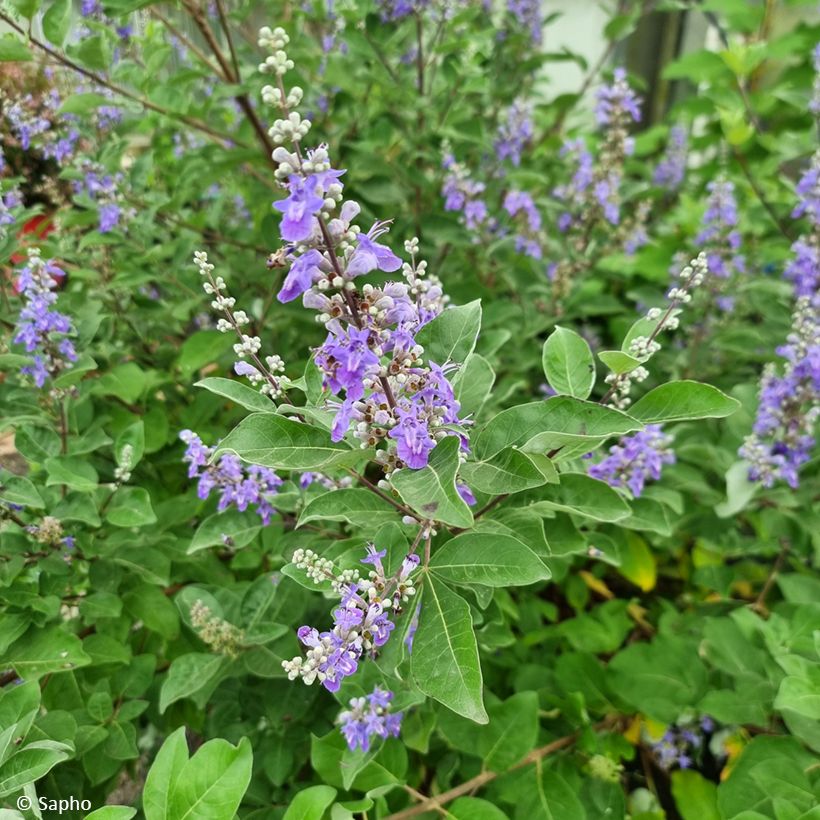

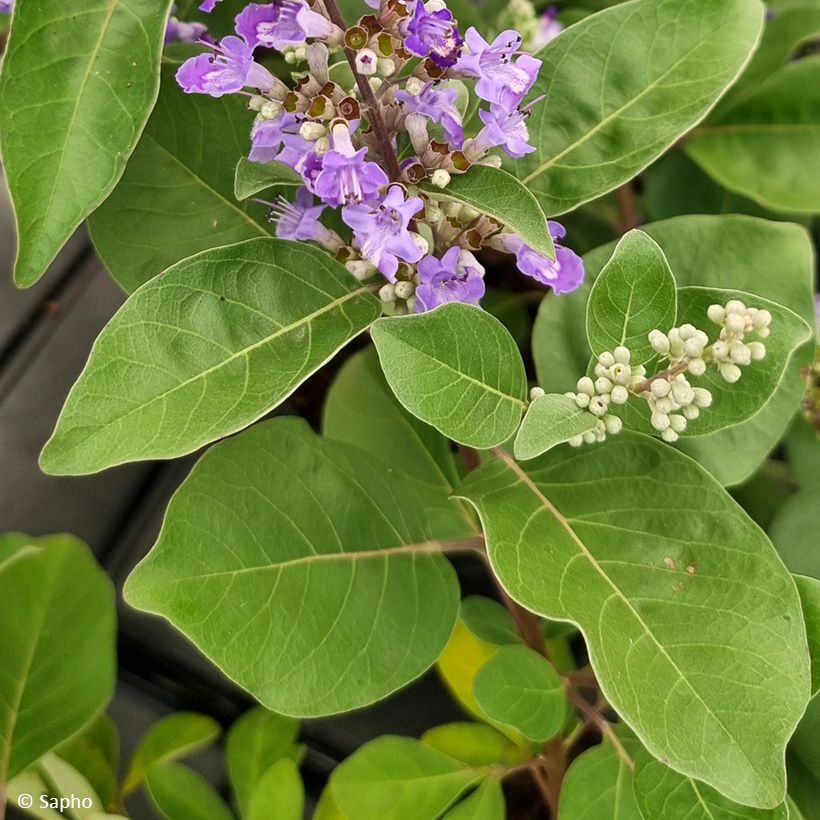

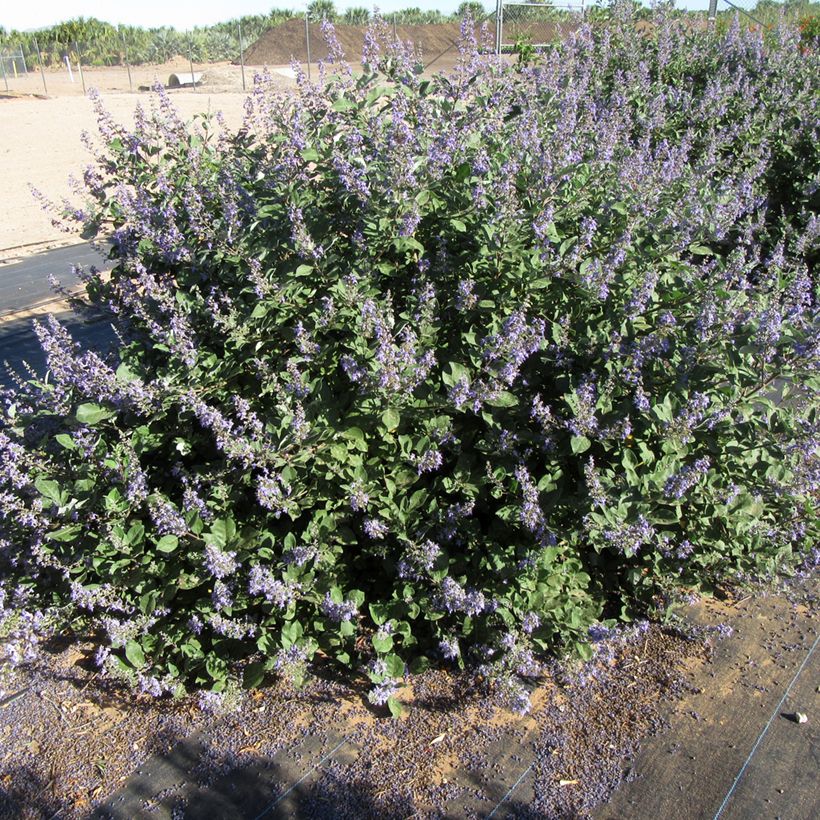

Plant habit
Flowering
Foliage
Botanical data
Vitex
agnus-castus
Chicagoland Blues (Daniel Searle)
Verbenaceae
Chaste Tree, Monk's Pepper, Chasteberry, Chaste Lamb
Cultivar or hybrid
Planting and care
Plant Vitex Chicagoland Blues in a sunny location in ordinary soil, but which is well drained and preferably deep. This shrub is not very demanding in terms of the nature of the soil, whether it is limestone or neutral, or slightly acidic, sandy, rocky or clayey (but drained). It resists saltwater spray and seepage very well. Protect it from cold and drying winds and water it in case of prolonged drought during the first 2 or 3 years. Once well rooted, it will completely do without watering in summer. It fears very strong frosts, especially if the soil it is planted in is poorly drained. Its vegetation may be destroyed by severe frosts, but it will regrow from its stump in spring. Pruning is not obligatory, but it promotes a bushy habit: carry out this operation at the end of winter or the beginning of spring. Vitex is not very susceptible to diseases and pests.
Planting period
Intended location
Care
Planting & care advice
-
, onOrder confirmed
Reply from on Promesse de fleurs
Similar products
Haven't found what you were looking for?
Hardiness is the lowest winter temperature a plant can endure without suffering serious damage or even dying. However, hardiness is affected by location (a sheltered area, such as a patio), protection (winter cover) and soil type (hardiness is improved by well-drained soil).

Photo Sharing Terms & Conditions
In order to encourage gardeners to interact and share their experiences, Promesse de fleurs offers various media enabling content to be uploaded onto its Site - in particular via the ‘Photo sharing’ module.
The User agrees to refrain from:
- Posting any content that is illegal, prejudicial, insulting, racist, inciteful to hatred, revisionist, contrary to public decency, that infringes on privacy or on the privacy rights of third parties, in particular the publicity rights of persons and goods, intellectual property rights, or the right to privacy.
- Submitting content on behalf of a third party;
- Impersonate the identity of a third party and/or publish any personal information about a third party;
In general, the User undertakes to refrain from any unethical behaviour.
All Content (in particular text, comments, files, images, photos, videos, creative works, etc.), which may be subject to property or intellectual property rights, image or other private rights, shall remain the property of the User, subject to the limited rights granted by the terms of the licence granted by Promesse de fleurs as stated below. Users are at liberty to publish or not to publish such Content on the Site, notably via the ‘Photo Sharing’ facility, and accept that this Content shall be made public and freely accessible, notably on the Internet.
Users further acknowledge, undertake to have ,and guarantee that they hold all necessary rights and permissions to publish such material on the Site, in particular with regard to the legislation in force pertaining to any privacy, property, intellectual property, image, or contractual rights, or rights of any other nature. By publishing such Content on the Site, Users acknowledge accepting full liability as publishers of the Content within the meaning of the law, and grant Promesse de fleurs, free of charge, an inclusive, worldwide licence for the said Content for the entire duration of its publication, including all reproduction, representation, up/downloading, displaying, performing, transmission, and storage rights.
Users also grant permission for their name to be linked to the Content and accept that this link may not always be made available.
By engaging in posting material, Users consent to their Content becoming automatically accessible on the Internet, in particular on other sites and/or blogs and/or web pages of the Promesse de fleurs site, including in particular social pages and the Promesse de fleurs catalogue.
Users may secure the removal of entrusted content free of charge by issuing a simple request via our contact form.
The flowering period indicated on our website applies to countries and regions located in USDA zone 8 (France, the United Kingdom, Ireland, the Netherlands, etc.)
It will vary according to where you live:
- In zones 9 to 10 (Italy, Spain, Greece, etc.), flowering will occur about 2 to 4 weeks earlier.
- In zones 6 to 7 (Germany, Poland, Slovenia, and lower mountainous regions), flowering will be delayed by 2 to 3 weeks.
- In zone 5 (Central Europe, Scandinavia), blooming will be delayed by 3 to 5 weeks.
In temperate climates, pruning of spring-flowering shrubs (forsythia, spireas, etc.) should be done just after flowering.
Pruning of summer-flowering shrubs (Indian Lilac, Perovskia, etc.) can be done in winter or spring.
In cold regions as well as with frost-sensitive plants, avoid pruning too early when severe frosts may still occur.
The planting period indicated on our website applies to countries and regions located in USDA zone 8 (France, United Kingdom, Ireland, Netherlands).
It will vary according to where you live:
- In Mediterranean zones (Marseille, Madrid, Milan, etc.), autumn and winter are the best planting periods.
- In continental zones (Strasbourg, Munich, Vienna, etc.), delay planting by 2 to 3 weeks in spring and bring it forward by 2 to 4 weeks in autumn.
- In mountainous regions (the Alps, Pyrenees, Carpathians, etc.), it is best to plant in late spring (May-June) or late summer (August-September).
The harvesting period indicated on our website applies to countries and regions in USDA zone 8 (France, England, Ireland, the Netherlands).
In colder areas (Scandinavia, Poland, Austria...) fruit and vegetable harvests are likely to be delayed by 3-4 weeks.
In warmer areas (Italy, Spain, Greece, etc.), harvesting will probably take place earlier, depending on weather conditions.
The sowing periods indicated on our website apply to countries and regions within USDA Zone 8 (France, UK, Ireland, Netherlands).
In colder areas (Scandinavia, Poland, Austria...), delay any outdoor sowing by 3-4 weeks, or sow under glass.
In warmer climes (Italy, Spain, Greece, etc.), bring outdoor sowing forward by a few weeks.






























